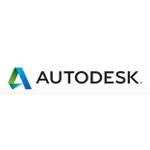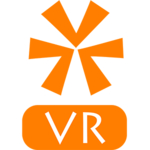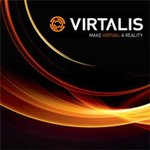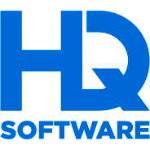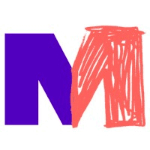TechnologyCounter provides genuine, unbiased real user reviews to help buyers make informed decisions. We may earn a referral fee when you purchase through our links, at no extra cost to you.
List of 15 Best VR Software
Showing 1 - 15 of 21 productsEON Reality is an innovative software company that specializes in immersive and interactive technologies for education, training, and industrial applications. With a global presence and a strong focus on virtual and augmented reality solutions, EON R...Read EON Reality Reviews
WorldViz is a leader in innovative virtual reality solutions, providing a wide range of tools and services for immersive experiences. With a dedication to creativity and technology, WorldViz empowers businesses, researchers, and creators to unlock th...Read WorldViz Reviews
IrisVR Suite is a software tool that allows you to experience your architectural designs in immersive virtual reality. With its innovative features and user-friendly interface, IrisVR Suite offers a seamless way to visualize and interact with 3D mode...Read IrisVR Suite Reviews
TechViz XL is a software designed to bring your ideas to life through immersive virtual reality experiences. With its advanced features and user-friendly interface, TechViz XL revolutionizes the way professionals in various industries visualize and i...Read TechViz XL Reviews
VRED is a software designed to bring your visualizations to life with stunning realism and unmatched functionality. With advanced tools and features, VRED allows users to create and manipulate virtual prototypes and designs with ease. Stay ahead of t...Read VRED Reviews
VR-STAR is a virtual reality software that transports you into immersive and interactive worlds. With VR-STAR, you can explore new dimensions, experience thrilling adventures, and interact with virtual environments like never before. Discover a whole...Read VR-STAR Reviews
Visual Render is a dynamic software designed to bring your visions to life with stunning visual representations. With its advanced tools and user-friendly interface, Visual Render revolutionizes the world of graphic design and 3D rendering. Let your...Read Visual Render Reviews
High Fidelity is more than just a software, its a revolutionary tool that aims to enhance your virtual and remote communication experience. With its innovative features interface, High Fidelity brings a whole new level of clarity and realism to your...Read High Fidelity Reviews
IC.IDO is an innovative and powerful software designed to revolutionize virtual product development and simulation. With its advanced technology and user-friendly interface, IC.IDO enables businesses to optimize their design processes and collaborate...Read IC.IDO Reviews
Unreal Engine is a powerful, industry-leading software that allows creators to bring their wildest imaginations to life. With its intuitive interface and versatile tools, Unreal Engine has become a go-to choice for game developers, filmmakers, archit...Read Unreal Engine Reviews
Founded in 2005, Oxagile is a software development company that has established itself as a trusted partner for businesses of all sizes. With a team of experienced developers and a strong focus on innovation, Oxagile provides custom software developm...Read Oxagile Reviews
HQSoftware is a leading software company dedicated to providing innovative solutions for businesses of all sizes. With a team of highly skilled developers and designers, HQSoftware offers customized software solutions tailored to the unique needs of...Read HQSoftware Reviews
TrainBeyond is a software that transforms the way you approach training and development in your organization. With its advanced features design, TrainBeyond empowers businesses to enhance their employees skills and knowledge, ultimately driving growt...Read TrainBeyond Reviews
Mursion is a software that uses virtual reality technology to provide immersive training experiences. With its advanced simulations, Mursion allows individuals and teams to practice and enhance their skills in a safe and realistic environment. This i...Read Mursion Reviews
VRcollab BIM is a software that combines the power of virtual reality with Building Information Modeling (BIM) technology. Designed to enhance collaboration and improve project management, VRcollab BIM allows architects, engineers, and construction p...Read VRcollab BIM Reviews
- What Is VR Software?
- Top Reasons Why Businesses Need VR Software?
- What Are the Top Key Features of VR Software?
- What Are the Top Benefits of VR Software?
- What Are the Steps to Choose the Right VR Software?
- What Are the Types of VR Software for Different Industries?
- What Are the Technology Trends for Best VR Software?
- What Are the Deployment Options for VR Software?
What Is VR Software?
Virtual Reality VR software refers to a category of software specifically designed for the purpose of developing Virtual Reality applications or facilitating immersive experiences. Top VR software enables users to engage with a computer-generated world that replicates real-life scenarios.
The individual engages with the surrounding world by utilizing a diverse range of hardware and software applications. Some instances of hardware employed in virtual reality (VR) encompass dedicated VR headsets, controllers, and tracking systems. Various types of software are utilized, such as games, simulations, and interactive social media experiences.
Virtual reality VR software is frequently employed to generate an immersive and lifelike encounter for the purposes of gaming, entertainment, and education. Additionally, this technology has the capability to generate virtual tours of various locations and imitate diverse contexts, such as office spaces or laboratory settings.
Virtual reality software is utilized to augment the viewing or gaming experience, so offering consumers a heightened sense of immersion.
Top Reasons Why Businesses Need VR Software?
1. Improved customer experience - Virtual reality VR software has the capability to generate immersive experiences that provide customers with enhanced engagement and heightened levels of happiness.
2. Enhanced marketing campaigns - Virtual reality software has the potential to be utilized as a tool for developing interactive marketing campaigns that aim to enhance sales and foster increased client involvement.
3. Training and employee development - VR creation software has the potential to generate a replicated work environment, which can serve as a valuable tool for staff training and the replication of workplace scenarios.
4. Product design and product visualization - Virtual reality (VR) technology has the capability to generate highly immersive virtual products that enable users to engage in exploration and interaction.
5. Data visualization - Virtual reality creation software has the potential to facilitate the creation of interactive three-dimensional (3D) models, thereby aiding organizations in their ability to effectively view and comprehend data.
6. Remote real-time collaboration - Top VR software has the potential to facilitate remote collaboration across many teams within the same virtual environment.
7. Interactive presentations - VR creation software has the potential to facilitate the creation of interactive presentations that may be collectively experienced by several users within a shared virtual environment.
8. Increased engagement - Virtual reality (VR) applications have the potential to enhance consumer experiences by providing a heightened sense of immersion and involvement, hence leading to increased levels of customer engagement.
9. Enhanced customer service - Top VR software has the potential to offer customers a virtual assistant for their service demands, thereby providing them with a more sophisticated means of efficiently accessing services.
10. Virtual marketplaces - VR creation software has the potential to facilitate the development of virtual markets, wherein buyers can conveniently browse for and make purchases of various products.
11. Improved workplace productivity - Virtual reality (VR) has the potential to enhance virtual communication across teams, hence expediting work completion while optimizing resource utilization.
12. Experiential marketing - Top VR software has the potential to facilitate the development of immersive experiences that can effectively foster consumer loyalty and stimulate customer engagement with products or services.
13. Virtual fitting rooms - Virtual reality (VR) technology has the potential to facilitate the development of virtual fitting rooms, which have the capability to accurately capture customers' body measurements and subsequently customize products to precisely match their unique measurements.
14. Virtual reality tours - Virtual reality (VR) has the potential to facilitate the development of virtual reality tours for businesses, enabling clients to remotely experience these establishments regardless of their geographical location.
15. Augmented Reality (AR) applications - VR creation software has the potential to be utilized in the development of augmented reality (AR) apps with the aim of enhancing client experiences.
What Are the Top Key Features of VR Software?
The key features of VR software include:
1. Virtual Reality (VR) Content Creation: Virtual reality creation software enables users to generate a highly authentic three-dimensional virtual environment. This software is commonly employed for the purpose of developing video games, interactive multimedia applications, or various forms of immersive virtual experiences.
2. 3D Visualization: This functionality offers users the capability to observe three-dimensional models from various perspectives. Additionally, this technology has the capability to provide lifelike visual effects for the purposes of animation and gaming.
3. Augmented Reality (AR) Support: This functionality enables users to engage with a three-dimensional environment through a diverse range of methods, hence augmenting the overall user experience.
4. Audio/Video Integration: The incorporation of audio and video components inside the virtual environment can be leveraged to enhance the immersive qualities of the user experience.
5. Motion Control: This functionality of VR creation software enables users to traverse and manipulate a three-dimensional virtual environment through the use of bodily movements.
6. Natural Human Interaction: The utilization of motion sensors and controllers has the potential to enhance the interactivity of the user experience by enabling the interpretation of body language and movement.
7. Cross-Platform Support: The VR management software should possess the capability to provide support for several platforms, including Windows, Mac, iOS, and Android.
8. Networked Experiences: The utilization of networking capabilities enables the facilitation of interactions among several users within a shared virtual environment.
9. Accessibility: The implementation of this functionality should enable those with impairments to effectively access and utilize the program.
10. User Interface Design: The design of the user interface should prioritize intuitiveness and user-friendliness.
What Are the Top Benefits of VR Software?
The top benefits of VR software are:
1. Cost Savings: Virtual reality software has the potential to yield significant time and cost savings for organizations by enhancing operational efficiency and facilitating the creation of superior products and services, all while incurring substantially lower expenses compared to conventional approaches.
2. Improved Safety: The utilization of virtual reality VR software has the potential to mitigate the hazards associated with employees operating in perilous work situations. This technology enables workers to engage in virtual simulations that provide a secure environment and accurately replicate real-life situations.
3. Enhanced Productivity: VR software has the potential to enhance productivity by enabling remote workers to access and engage with content at an equivalent level concurrently.
4. Collaborative Learning: The best virtual reality software offers a novel and stimulating avenue for employees to engage in collaborative endeavors, enabling them to exchange thoughts and expertise through interactive means.
5. Increased Immersion: The best VR software offers a highly immersive experience that surpasses the capabilities of conventional training methods. Virtual reality enables users to fully engage with their surroundings and manipulate items in a manner that closely resembles real-life experiences.
6. Improved Engagement: VR software has the potential to enhance learner engagement by employing interactive lessons that are both enjoyable and captivating.
7. Increased Focus: The immersive characteristics of the best virtual reality software have the potential to enhance concentration levels, as users become more deeply involved and driven during training sessions.
8. Better Understanding: Virtual reality VR software facilitates a more comprehensive comprehension of intricate subjects by offering users an immersive and lifelike environment for interaction.
9. Streamlined Processes: The utilization of automated VR management software offered by virtual reality software can effectively optimize processes, hence enhancing operational efficiency and diminishing task execution time.
10. Enhanced Performance: VR software has the potential to enhance performance by providing users with an improved comprehension of their surroundings and the specific responsibilities associated with their roles.
What Are the Steps to Choose the Right VR Software?
1. Consider the purpose of the best VR software: For what purpose do you intend to utilize it? What specific competencies are required for the task at hand? Is the intended use of the product primarily for gaming or instructional purposes?
2. Understand the hardware requirements: What kind of hardware is being utilized? Is the software dependent on certain hardware and compatibility, or is it compatible with a wide range of computers and devices?
3. Look at the features of the software: Does the VR management software possess the desired features and capabilities that align with your requirements? Are there any particular functions that the software provides that you require?
4. Take into account the cost of the software: Does the software fall inside your allocated budget? Does the cost of the product justify its value in terms of its features, capabilities, and usability?
5. Read reviews of the software: What is the feedback from other users regarding the software? Is it highly rated? Have any downsides been discussed in the discussion?
6. Test out the software for yourself: Is the VR management software user-friendly and comprehensible? Is it possible to identify and locate all the necessary traits and capabilities? Does the virtual reality creation software experience align with the preconceived expectations of the user?
By following these procedural guidelines, individuals will be equipped to make a well-informed selection and choose the best virtual reality software that aligns with their specific requirements.
What Are the Types of VR Software for Different Industries?
1. Education: Educational virtual reality creation software, immersive virtual field excursions, language acquisition programs, anatomical simulations, and interactive scientific experiments are among the diverse use of technology in education.
2. Healthcare: Medical training simulations, telemedicine, three-dimensional anatomical visualization, and virtual reality-assisted therapy for disorders such as autism and anxiety are some of the technological advancements that have emerged in the field of medicine.
3. Aerospace and Defense: Training simulators are utilized to adequately educate pilots for flying missions, in addition to simulating intricate autos that are employed in the transportation of hazardous chemicals.
4. Manufacturing: The implementation of virtual assembly lines has been proposed as a means to mitigate errors in the manufacturing process. Simulated applications have also been suggested as a tool for testing novel assembly technologies.
Additionally, simulations of poisonous and hazardous settings have been developed to assess the safety and effectiveness of various protocols. Furthermore, the use of test swarms consisting of autonomous machines has been explored in order to evaluate their performance and capabilities.
5. Retail & eCommerce: Virtual stores have emerged as a means to provide consumers with very realistic shopping experiences, allowing them to engage in immersive fashion modeling experiences. Additionally, these virtual stores incorporate augmented reality (AR) and virtual reality creation software to aid users in configuring products to their preferences.
6. Gaming: The subject of discussion pertains to several aspects of gaming, including multiplayer gaming, 3D gaming, virtual reality gaming rooms, and immersive gaming settings.
7. Tourism: Virtual tours, virtual museum experiences, interactive tours for tourist locations, and virtual reality experiences have been developed as means to enhance client engagement and speed the process of interaction.
What Are the Technology Trends for Best VR Software?
The technology trends for the best VR software are following.
1. Augmented Reality (AR) and Mixed Reality (MR): Augmented reality (AR) and mixed reality (MR) technologies are experiencing a growing utilization in order to enhance user engagement by creating a more immersive experience.
The process involves the incorporation of digital entities into the user's physical surroundings, which can be augmented by employing dedicated controls and tracking mechanisms.
2. 3D Rendering: The utilization of 3D rendering techniques is increasingly prevalent in the best virtual reality software, facilitating the presentation of lifelike graphics and environments to users. The spectrum of design outputs might encompass basic wireframes as well as intricate textures and realistic features.
3. High-Definition Displays: High-definition displays enhance the user's immersion through the provision of images with higher resolution compared to conventional monitors. Furthermore, there is a growing prevalence of higher-resolution displays in virtual reality (VR) headsets, which facilitates enhanced image quality.
4. Motion Tracking: The utilization of motion tracking technology enables users to engage with their virtual environment in a manner that closely emulates natural interactions.
The gaming headset or controller incorporates specialized sensors, including a variety of technologies like as optical and laser-based tracking systems, to monitor the user's real-world position and movements.
5. Voice Recognition and Natural Language Processing: The inclusion of voice recognition capabilities has become a fundamental characteristic of VR management software, enabling users to engage with their simulated environment through rudimentary spoken instructions.
Furthermore, the utilization of natural language processing (NLP) technology is being implemented to comprehend the user's intention and provide a more customized encounter.
What Are the Deployment Options for VR Software?
The selection of the best VR software deployment solutions is contingent upon the specific application and hardware employed.
1. In the case of software designed to operate alone on the local system, the prevailing approach often involves the installation of the application on the computer, followed by the connection of a virtual reality (VR) headset.
2. In the context of cloud-based applications, developers commonly employ internet platforms like Steam or Viveport to directly distribute their program to end consumers.
3. Web-based VR management software have the capability to be accessible directly through a web browser and may be experienced by utilizing a VR headset that is compatible with the system.
4. Finally, enterprises have the option to internally implement their best virtual reality software on their own servers, so enabling them to oversee the complete application lifecycle and establish a safe environment.




